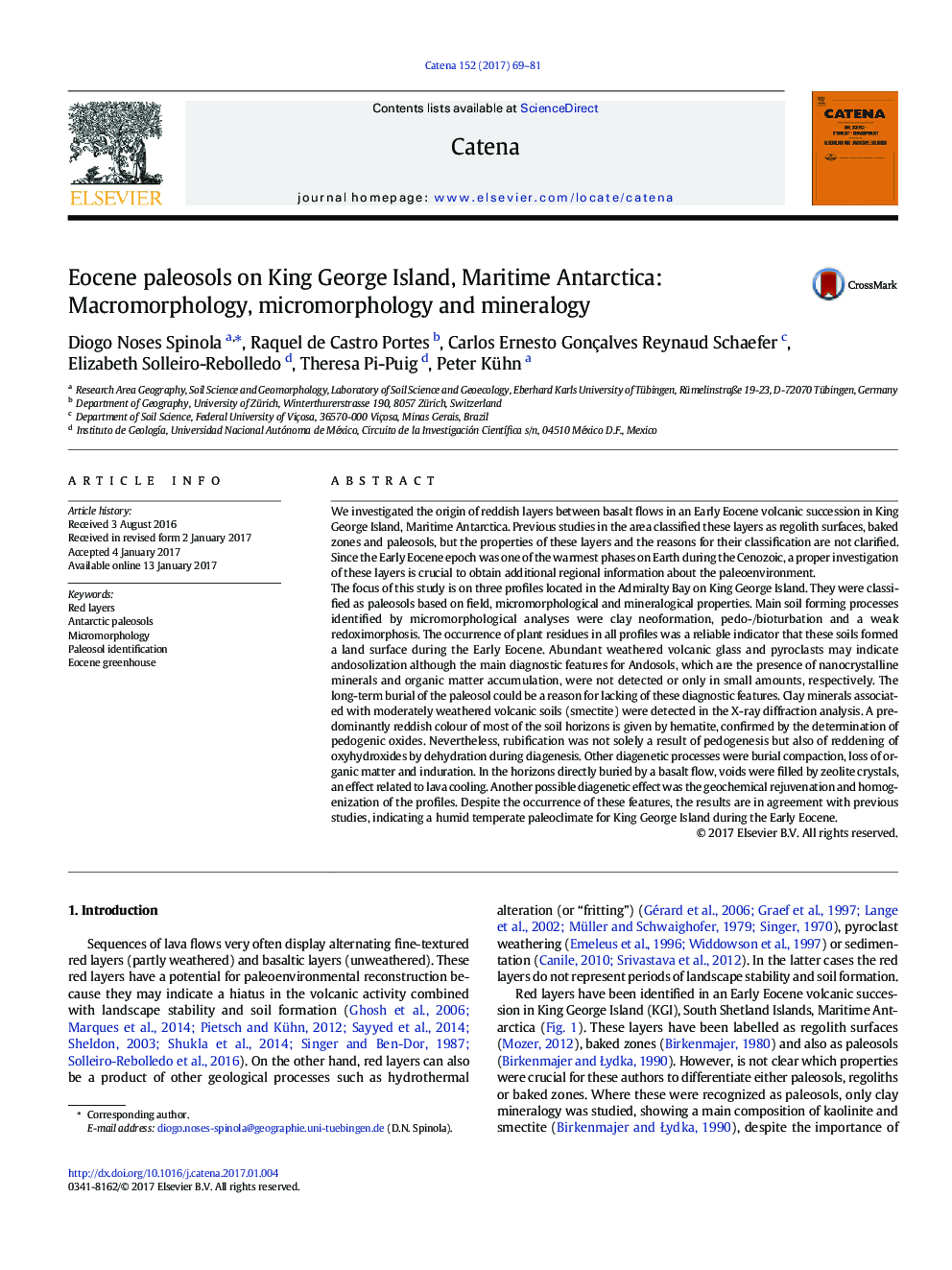| کد مقاله | کد نشریه | سال انتشار | مقاله انگلیسی | نسخه تمام متن |
|---|---|---|---|---|
| 5769949 | 1629202 | 2017 | 13 صفحه PDF | دانلود رایگان |
- Eocene paleosols of King George Island were identified.
- The paleosols are moderately developed and still hold paleoenvironmental information.
- The pedogenic processes are in agreement with previous paleoclimate proxies.
- Diagenesis did not erase the paleoenvironmental record.
We investigated the origin of reddish layers between basalt flows in an Early Eocene volcanic succession in King George Island, Maritime Antarctica. Previous studies in the area classified these layers as regolith surfaces, baked zones and paleosols, but the properties of these layers and the reasons for their classification are not clarified. Since the Early Eocene epoch was one of the warmest phases on Earth during the Cenozoic, a proper investigation of these layers is crucial to obtain additional regional information about the paleoenvironment.The focus of this study is on three profiles located in the Admiralty Bay on King George Island. They were classified as paleosols based on field, micromorphological and mineralogical properties. Main soil forming processes identified by micromorphological analyses were clay neoformation, pedo-/bioturbation and a weak redoximorphosis. The occurrence of plant residues in all profiles was a reliable indicator that these soils formed a land surface during the Early Eocene. Abundant weathered volcanic glass and pyroclasts may indicate andosolization although the main diagnostic features for Andosols, which are the presence of nanocrystalline minerals and organic matter accumulation, were not detected or only in small amounts, respectively. The long-term burial of the paleosol could be a reason for lacking of these diagnostic features. Clay minerals associated with moderately weathered volcanic soils (smectite) were detected in the X-ray diffraction analysis. A predominantly reddish colour of most of the soil horizons is given by hematite, confirmed by the determination of pedogenic oxides. Nevertheless, rubification was not solely a result of pedogenesis but also of reddening of oxyhydroxides by dehydration during diagenesis. Other diagenetic processes were burial compaction, loss of organic matter and induration. In the horizons directly buried by a basalt flow, voids were filled by zeolite crystals, an effect related to lava cooling. Another possible diagenetic effect was the geochemical rejuvenation and homogenization of the profiles. Despite the occurrence of these features, the results are in agreement with previous studies, indicating a humid temperate paleoclimate for King George Island during the Early Eocene.
Journal: CATENA - Volume 152, May 2017, Pages 69-81
